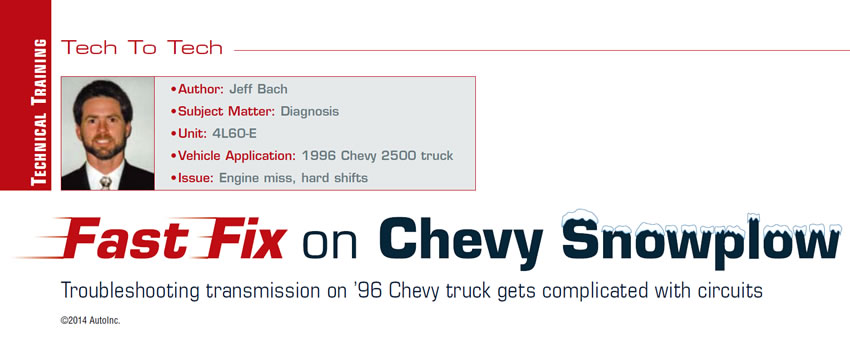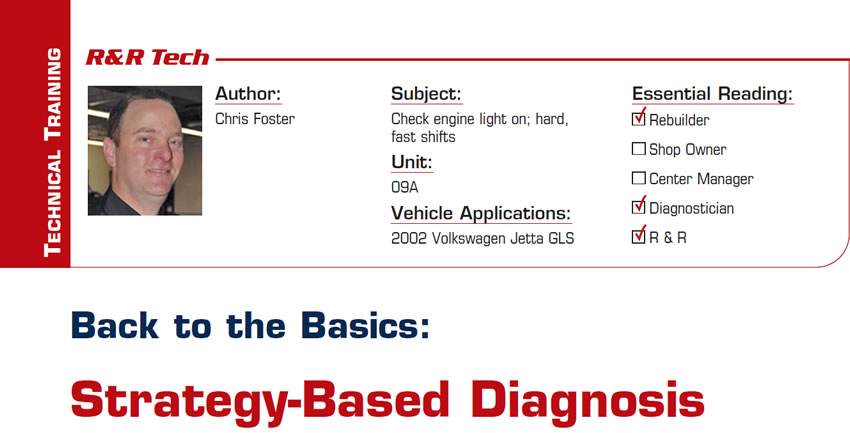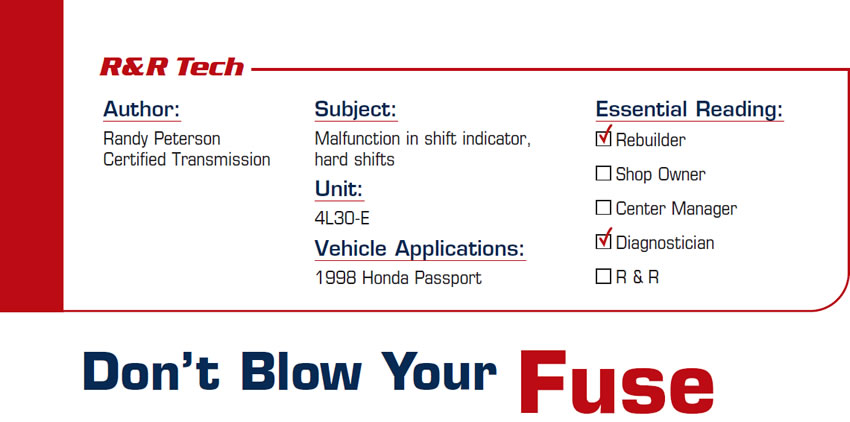Fast Fix on Chevy Snowplow
This particular truck is a 1996 Chevy 2500 series four-wheel-drive converted from a diesel to a 350 5.7-liter fuel-injected Vortex with an aftermarket powertrain wiring harness and a 4L60-E electronically shifted transmission. The guy bought it for his landscaping business strictly to plow snow. It had a bad transmission, which he had one of the local transmission shops overhaul. It came to me with the transmission banging hard when you dropped it into gear. It also had a rough 1-2 shift and didn’t shift at all from second to third.

Back to the Basics: Strategy-Based Diagnosis
Later that day they showed up to drop off the car, a 2002 Volkswagen Jetta GLS with 72,000 miles (Figure 1). The owner of the car started to explain the concern he was having: “Everything was working great, then one day the check engine light came on and it started to shift real hard and fast. I took it to (shop A) and they said it was either the transmission control module or the transmission. If it was the module, it was going to be $2,000; if it was the transmission, $5,000 plus reprogramming and any wire repairs; or it could need both. I paid them $145 for looking at it, but I wanted to get a little more specific about what it was going to cost, so I took it to (shop B); they had it for a week and said they thought it needed a control module but were not real sure and asked me to take it somewhere else, so here I am.”

Don’t Blow Your Fuse
The vehicle involved was a 1998 Honda Passport 4WD with a 3.2-liter V-6 and 4L30-E transmission. The shift indicator in the cluster was not functioning properly, and the transmission was shifting hard. The indicator showed P in Park and 1 in D3, D2 and D1, and it didn’t light up any other time. This seemed to be pretty straightforward, since the mode switch (range sensor) has a high failure rate.

‘Sleight of Hand’
Another problem area also can be the throttle-pedal cable. This cable is so long that it eventually stretches (see Figure 1). When you step on the throttle, the TPS responds by lowering the voltage (yes, lower voltage; the TPS ranges from 4.5 to 0.5 volts), at which time the injector-pump lever has not been moved.

